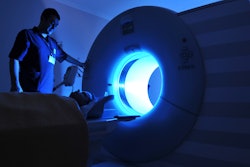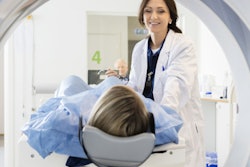
A simple and cost-effective intervention led to reductions in CT radiation dose as high as 58% -- without a notable drop in image quality -- for a cohort of nearly 1 million individuals from 100 facilities across the globe in a new study. The findings were published online March 30 in JAMA Internal Medicine.
The group, led by Dr. Rebecca Smith-Bindman of the University of California, San Francisco (UCSF), evaluated the extent to which a sequence of interventions was able to reduce CT radiation dose at healthcare organizations from the U.S. and various countries throughout Europe and Asia.
The study cohort included roughly 864,000 adults who underwent well over 1 million diagnostic CT exams of the head, chest, abdomen, or abdomen and chest from November 2015 to September 2017. The data was obtained through dose-monitoring software and compiled at the UCSF International CT Radiation Dose Registry.
After tracking radiation dose at the imaging facilities, Smith-Bindman and colleagues conducted a two-part intervention. First, they audited each facility and delivered an individualized report that included a summary of key dose metrics in comparison with other facilities.
Following a four-week transitional period, the researchers performed a follow-up audit, provided a dose report, and offered guidance on quality improvement methods for CT dose optimization through lectures and discussions. They also hosted a forum for sharing best practices and how to implement changes and suggested actionable steps tailored to each facility. The steps included recommendations such as how to modify technical parameters for specific CT scanners to match those used at facilities using the lowest radiation doses.
Overall, the researchers found that their multipronged quality improvement program led to statistically significant reductions in effective dose and organ dose for nearly all types of CT exams, ranging from 3% to 43%. The initial audit alone also led to significant dose reductions for some types of CT exams.
| Effect of a quality improvement initiative on CT radiation dose | ||
| Before intervention | After intervention | |
| Mean effective dose (mSv) | ||
| Chest + abdominal CT | 14.9 | 12.9 |
| Abdominal CT | 14.7 | 13.9 |
| Chest CT | 7.1 | 6.8 |
| Head CT* | 1.7 | 1.7 |
| Individual organ dose (mGy) | ||
| Chest + abdominal CT (lung) | 70.7 | 40.6 |
| Chest + abdominal CT (colon) | 42.1 | 24.5 |
| Abdominal CT | 62.6 | 50.4 |
| Chest CT | 29.3 | 25.6 |
| Head CT | 89.3 | 81.8 |
Furthermore, the researchers found that the proportion of high-dose CT exams acquired at the facilities decreased considerably, according to measurements of effective dose -- by 30% for abdominal-chest CT, 17% for head CT, 10% for abdominal CT, and 4% for chest CT (p < 0.001; p = 0.03). The intervention's effect on high-dose CT was even more pronounced based on measurements of organ dose, resulting in dose reductions as high as 57% to 58% for the chest and abdomen.
The findings support the idea that providing detailed feedback to imaging facilities on CT dose metrics changes behavior and reduces both the amount of unnecessary high-dose CT exams performed and patient radiation exposure, Smith-Bindman and colleagues noted. The organizational approach to quality improvement resulted in much greater change than the audit alone.
The researchers also conducted surveys asking radiologists and radiologic technologists to assess the diagnostic quality of CT scans acquired at their respective facilities. Survey participants reported acceptable image quality for roughly 93% of all CT exams both before and after the intervention.
"CT radiation doses can be reduced through simple, inexpensive interventions without reducing radiologist satisfaction with image quality," the authors concluded.




















